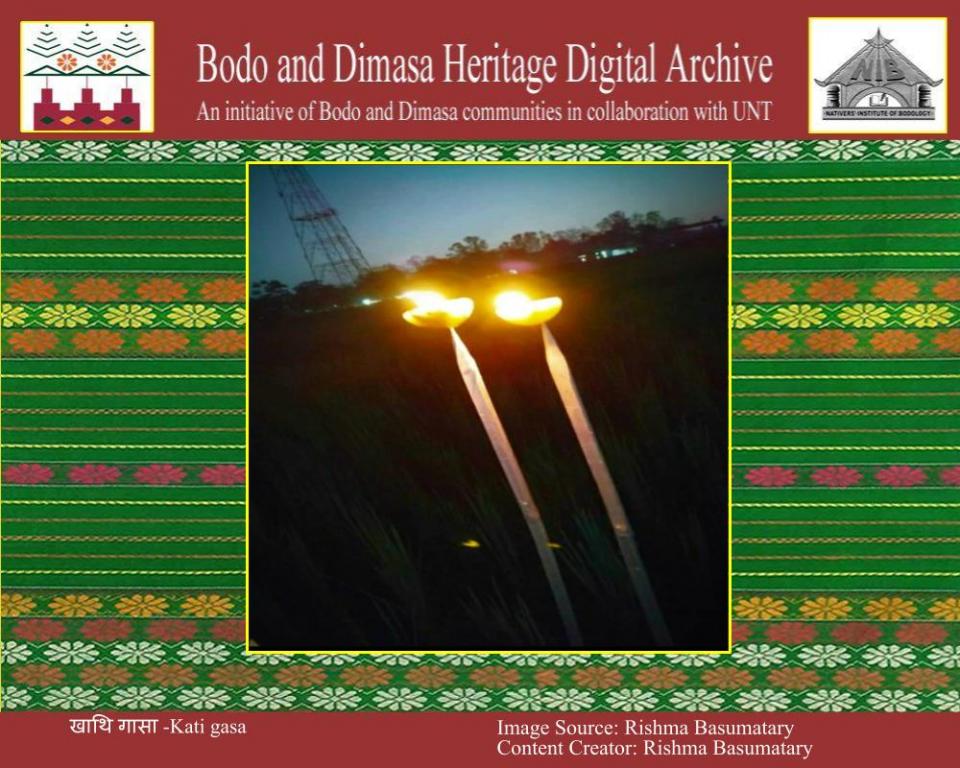खाथि गासा (Kati gasa)
Kati Gasa Saonai festival is celebrated on the Sankranti day of the Assamese month Ahin- Kartik (October) in a ritualistic manner. Various names for this celebration are used in the Bodo community, including Gasa Hwnai, Kati Gasa, Gasa Saonai, etc.
An earthen lamp is usually lit on the first day of the Kati Gasa Saonai celebration in the paddy field, Bathou's altar (the supreme god of the Bodos), the cowshed (goli), at bakhri (the granary) as well as both side of the gateways in the evening. The Bodos held the belief that if they lit a lamp in a paddy field, the nasty insect (which attacked the paddy corn) would die. They also believed that lighting a lamp at a cowshed would ensure a bright future for the cattle, at a granary would provide high hopes for paddy corn, and lighting a lamp at the Bathou altar would bring about unity and peace in the family. For the kati gasa saonai ritual, it is customary for one family member to travel to their rice field in the evening to earthen the lamp after gathering necessary items such as elephant apple fruits, mustard oil, lamp wick, and a 3- to 4- foot stick of bamboo. On the northeast side of the paddy field, they poke one end of the bamboo stick to the ground and another to the peel/rind of the elephant apple where the ritualistic lighting of the lamp is performed. Although the festival is observed in a simple way and people do not enjoy it much unlike other celebrations, it has a great significance in Bodo society and their agricultural life.


Add new comment